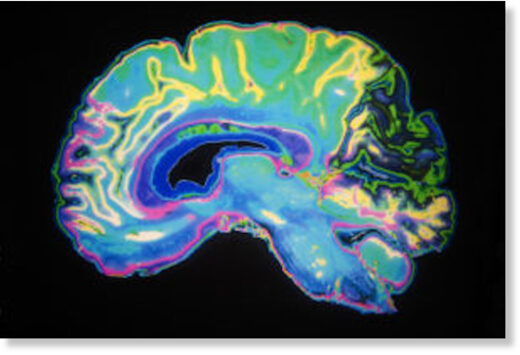"By looking at sleep, and looking how it changes, you get insight into something truly fundamental about brain development," said Geoffrey West, PhD, a theoretical physicist who is the Shannan distinguished professor and a past president of SFI, and coauthor of the researchers' published paper. "Don't wake babies up during REM sleep — important work is being done in their brains as they sleep," added Gina Poe, PhD, a UCLA professor of integrative biology and physiology who has conducted sleep research for more than 30 years. "Sleep is as important as food. And it's miraculous how well sleep matches the needs of our nervous system. From jellyfish to birds to whales, everyone sleeps. While we sleep, our brains are not resting." Poe is senior author of the team's published paper, which is titled, "Unraveling why we sleep: Quantitative analysis reveals abrupt transition from neurological reorganization to repair in early development."
Why does the mouse sleep five times longer than the elephant? Why do babies sleep longer than adults? Sleep, in spite of its ubiquity, holds mysteries that have perplexed scientists for decades. But the fact that sleep is required during development and throughout the animal kingdom suggests that it acts as a biological process that is necessary for survival, the authors suggested. Although experts have proposed many possible reasons for sleep, the two most prominent are neural reorganization, which is essential to learning, and repair.
"Two of the leading hypotheses are that sleep enables (i) the repair and clearance needed to correct and prevent neuronal damage and (ii) the neural reorganization necessary for learning and synaptic homeostasis," they wrote. "There is also substantial and direct evidence that sleep promotes neuroplastic reorganization related to learning and consolidating memory and also regulates synaptic rescaling."

Time asleep can roughly be divided into REM (random eye movement) and non-REM (NREM). Colloquially, REM sleep is often known as "deep sleep," but its purpose has remained an open question. Previous work carried out by West and Van Savage, PhD, a physicist and biologist who is a professor at UCLA and an external professor at SFI, had looked at differences in sleep times among mammals. For their newly reported studies, the research team, which included scientists with expertise in neuroscience, biology, mathematics, and statistics, conducted the most comprehensive statistical analysis of sleep to date, using data from more than 60 sleep studies involving humans and other mammals.
They examined data on sleep throughout development — including total sleep time, REM sleep time, brain size, and body size — and built and tested a mathematical model to explain how sleep changes with brain and body size. The model reduces the brain to a series of simple equations that capture how the brain uses energy to process information (which it must then reorganize). The authors input data from a variety of studies that looked at sleep time, metabolic rate, and brain size for dozens of participants who ranged from infants to adolescents.
By determining the ratios of REM and NREM to total sleeping time, among other factors like brain size, the researchers were able to use the model to predict the purposes of these respective types of sleep. They discovered that REM sleep is primarily responsible for reorganization/learning that dominates early development, while NREM handles the everyday repair that occurs throughout life. Nearly all of this brain repair occurs during sleep, according to Savage.

The researchers found that a sudden change at this switch point of about 2.4 years of age, when the majority of sleep shifts from REM to NREM — a phase shift from sleeping to reorganize, to sleeping to repair. "Our findings reveal an abrupt transition, between two and three years of age in humans," they noted. "Specifically, our results show that differences in sleep across phylogeny and during late ontogeny (after two or three years in humans) are primarily due to sleep functioning for repair or clearance, while changes in sleep during early ontogeny (before two or three years) primarily support neural reorganization and learning ..."
This transition point had not been pinpointed before, and could have important implications for development. Savage commented, "The brain is doing something really amazing and very different during that period. What are the consequences of that, in terms of our ability to learn languages or adapt our brains to different situations?"
REM sleep decreases with the growth in brain size throughout development, the scientists found. While newborns spend about 50% of their sleep time in REM sleep, that falls to about 25% by the age of 10 years and continues to decrease with age. Adults older than 50 years of age spend approximately 15% of their time asleep in REM. The significant dropoff in REM sleep at about two-and-a-half happens just as the major change in the function of sleep occurs, Poe said.
So while children need more sleep than adults, babies need much more, roughly twice as much as adults. The large percentage of REM sleep in babies is in stark contrast to the amount of REM sleep observed in adult mammals across an enormous range of brain sizes and body sizes. Adult humans have five REM cycles during a full night of sleep and can have a few dreams in each cycle.
"Infants spend a much greater percentage of time in REM sleep compared with older children and adults," the authors noted. "This finding suggests that REM sleep is likely crucial for the initial growth of babies and perhaps especially for the regulation of synaptic weights throughout the nervous system ... The large change in percent REM sleep across development is thus a key indicator that the function of sleep, and particularly of REM sleep, is very different during development than in adults."
In fact, the team's data were remarkably consistent across the different species they looked at. All species experienced a dramatic decline in REM sleep when they reached the human developmental equivalent of about 2.5 years of age. The fraction of time spent in REM sleep before and after that point was roughly the same, whether the researchers studied rabbits, rats, pigs, or humans. " ... our analysis shows that neuroplastic reorganization occurs primarily in REM sleep but not in NREM," the team concluded. "This developmental transition suggests a complex interplay between developmental and evolutionary constraints on sleep."
A chronic lack of sleep likely contributes to long-term health problems such as dementia and other cognitive disorders, diabetes, and obesity, to name a few, Poe said. When you start to feel tired, she said, don't fight it, go to bed. "I fought sleep and pulled all-nighters when I was in college, and now think that was a mistake," Savage commented. "I would have been better off with a good night's sleep. Now when I feel tired, I don't have any guilt about sleeping." As Poe noted, a good night's sleep is excellent medicine. And it's free.
For most adults, a regular seven-and-a-half hours of sleep a night is normal. Time lying awake doesn't count, Poe noted. "I'm very interested to see if our framework also can be extended to other mammals," added lead author Junyu Cao, PhD, a researcher at the University of Texas at Austin.





Comment: More on the study and benefits of good sleep: